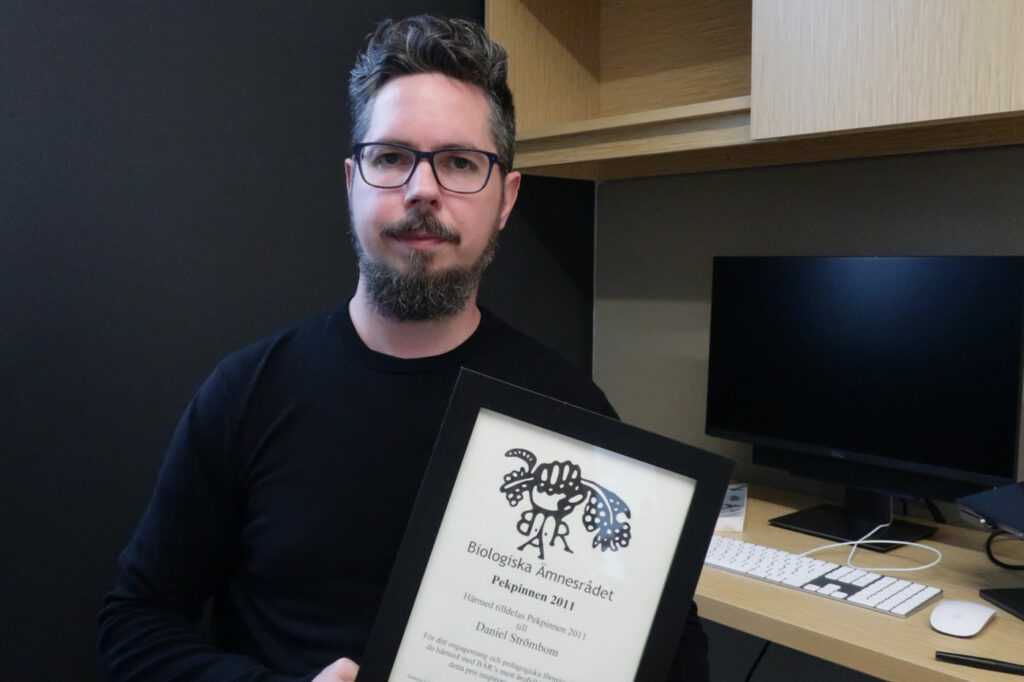What I’m teaching
Collective phenomena in animal groups; biological modeling; biostatistics
What I study
Collective behavior in animals—how animals behave in groups. I am a mechanistic modeler who collaborates with biologists to understand animal behavior: Birds flock, fish swim in schools, ants build nests and forage for food, sheep dogs herd sheep. My research isn’t restricted to specific species or phenomena, so it makes it very interesting. I can develop mathematical or computational models for any phenomenon biologists are interested in knowing more about. My favorite research project was modeling collective behavior of leaf-cutting ants. My biologist collaborator had previously observed that individual ants appear to follow specific traffic rules on trails. She had also observed that the overall ant traffic on the trail exhibited interesting patterns, in particular, lane formation. We developed models to investigate the link between the individual ant rules and the overall traffic patterns observed. We needed to go back and forth between model work and experiments several times over a period of years before a sensible model was obtained. The process is always iterative.
What drew me to Lafayette
I taught here for two years, from 2014-16, as a postdoctoral teaching fellow. Prior to Lafayette, I had been teaching in Sweden. There my class sizes were often large—as many as 80 students. I tried to always seek out the students who weren’t doing well, to offer them assistance. Then I came to Lafayette where I had 17 students in each of my classes. The benefits of that became immediately noticeable. The students I had in class were driven and ambitious and knew they needed to work hard. I found that I could spend a lot of time with all of the students—not just ones who needed extra help. It was amazing from the first time I taught here. I went back to Europe and worked at a research university in the United Kingdom, where at one point I had 97 students in a computer lab at the same time. It reinforced that I wanted to move back to a place like Lafayette.
What students can expect
Students can certainly expect that I will do my best. My primary goal is to set sensible objectives and design a route to get each student to meet the objectives. I’m extremely flexible. If one route doesn’t work for a particular student, I’ll try another. I’ll keep trying until it works.
I teach mathematics to biologists, so I want to remove any potential anxieties about mathematics and build students’ confidence. I want to provide enough detail about why it’s important for them to invest time in what we are learning. Something might seem annoying now, but I want them to know that I will assist them through it. I want them to understand the importance of what they are learning and how they might use it later. It could help them understand climate change, save sea turtles, or whatever they are passionate about.

What I’m holding
This is a teaching award I won in 2011. It is something I am very proud of because it was awarded by biology students. Biology students nominate faculty and hundreds vote. I was the first non-biologist to win the award. I was teaching mathematics and statistics to biology students. Those subjects can sometimes get a chilly response from biology students. Two of the students who I had in class signed the award. It reads, “for your engagement and pedagogical skill, you are hereby awarded this most honorable prize. We hope this inspires you in the future.” It most certainly has.
What’s not on my CV
I collect dress shoes. I currently have about 40 pairs, but my collection is always evolving. I started it sort of seriously when I was here at Lafayette before. When I was a teenager, I always wore the same shoe: Doc Martin 1925 model. They broke. I replaced them, but the quality of the shoe had decreased, and they wore out quickly. So I had to find new shoes. But I didn’t like what I saw in most standard shoe shops. I started looking online and found these amazing things. These were pieces of art, and I realized these are the shoes I should be wearing. I got one pair, then another, and it kept escalating. Comfort is a factor. But comfort can’t be reason alone to buy a shoe.

